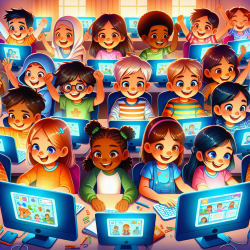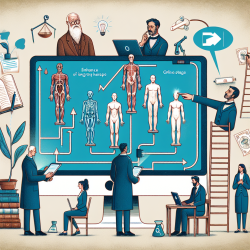As a speech-language pathologist committed to improving outcomes for children, it's crucial to stay informed about the latest research. One fascinating study, "Auditory-visual Perception of Speech in Children with Learning Disabilities: The McGurk Effect," offers valuable insights into how children with learning disabilities (LD) perceive speech. This blog will explore how the findings from this study can be applied in practice to enhance speech perception in children with LD.
Understanding the McGurk Effect
The McGurk Effect demonstrates how visual and auditory information can be integrated to form a new speech percept. When auditory and visual inputs are mismatched, such as hearing "ba" while seeing the lip movements for "ga," the brain fuses these inputs into a new percept, often "da" or "tha." This phenomenon highlights the importance of multisensory integration in speech perception.
Key Findings from the Study
The study examined 20 children with LD and 20 typically developing controls, along with 10 adult controls. Key findings include:
- Children with LD have some ability to integrate auditory-visual speech stimuli, but this ability does not strengthen with development and experience as it does in typically developing children.
- Older children with LD showed similar levels of integration as younger children with LD, indicating a plateau in development.
- There were significant correlations between weaker McGurk effects and lower reading and math scores in children with LD.
Implications for Practice
These findings suggest several strategies that practitioners can implement to improve speech perception in children with LD:
- Multisensory Training: Incorporate exercises that combine auditory and visual speech cues. Use videos of speakers articulating sounds clearly and encourage children to watch and listen simultaneously.
- Focus on Visual Cues: Emphasize the importance of visual information by teaching children to lip-read. This can help strengthen the integration of auditory and visual inputs.
- Enhanced Attention to Speech Cues: Use engaging and interactive activities that require children to focus on both auditory and visual speech cues. This can include games, apps, and other multimedia tools.
- Repetition and Consistency: Regular practice with consistent multisensory stimuli can help reinforce the integration of auditory and visual information.
Encouraging Further Research
While the study provides valuable insights, it also highlights the need for further research. Understanding the neural mechanisms behind the McGurk Effect and how they differ in children with LD can lead to more targeted interventions. Practitioners are encouraged to stay updated with ongoing research and consider participating in studies to contribute to the field.
To read the original research paper, please follow this link: Auditory-visual Perception of Speech in Children with Learning Disabilities: The McGurk Effect.










